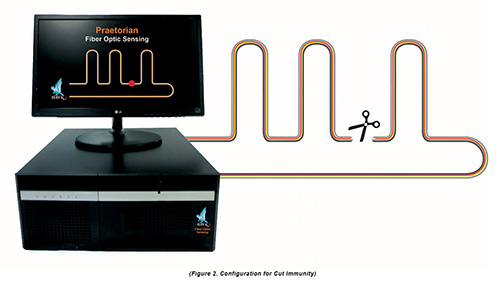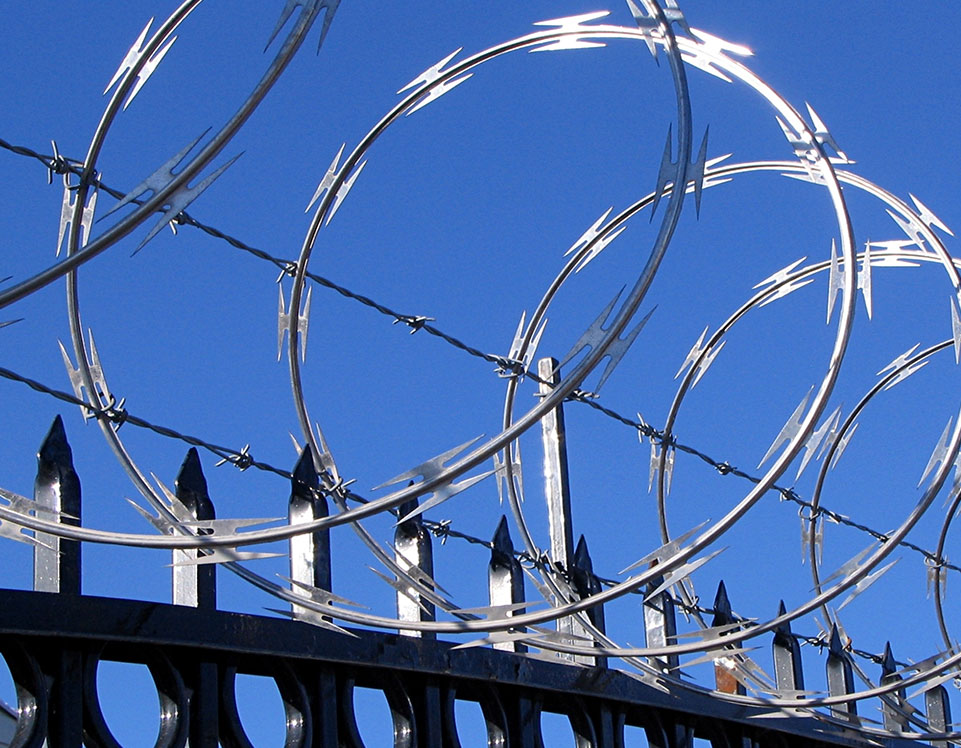Why a Fiber Optic Security System Is Essential for High-Security Facilities and Environments
Why a Fiber Optic Security System Is Essential for High-Security Facilities and Environments
Blog Article
Enhance Your Safety And Security With Advanced Fiber Optic Safety And Security Solutions
In an era where safety is extremely important, advanced fiber optic safety systems present a compelling option for boosting safety throughout numerous environments. These systems not only flaunt superior data transfer and rate for high-resolution surveillance however additionally offer amazing strength versus external interferences. As organizations progressively look for reliable ways to secure their properties, the integration of innovative innovations like AI and IoT within fiber optic frameworks raises necessary inquiries concerning their effectiveness compared to traditional systems. What ramifications do these improvements hold for future safety actions?
Advantages of Fiber Optic Protection
Using the benefits of fiber optic modern technology dramatically improves safety and security systems across various applications. Among the key benefits is the enhanced data transfer ability, permitting the transmission of big amounts of information at high rates. This is especially important for real-time video security, where high-resolution feeds can be sent out without latency, guaranteeing immediate feedback abilities.
Additionally, optical fiber display exceptional resistance to electro-magnetic disturbance, which is important in settings with prospective signal disruptions. This integrity guarantees consistent efficiency in crucial security procedures. Furthermore, fiber optic wires are less vulnerable to tapping and unapproved gain access to contrasted to conventional copper wiring, consequently enhancing information integrity and privacy.
An additional significant advantage is the longevity of fiber optic systems; they are much more immune to ecological elements such as wetness, temperature level fluctuations, and destructive materials. This resilience equates to decrease upkeep costs and longer life expectancies for protection installations.
Finally, the light-weight nature of fiber optic wires facilitates much easier installment and transmitting, particularly in complicated facilities (fiber optic security system). Inevitably, the assimilation of fiber optic technology into safety and security systems not only boosts defense actions yet also optimizes operational efficiency
Key Functions to Think About
When examining fiber optic safety systems, several vital attributes need to be considered to make sure ideal efficiency and performance. Initially, analyze the system's discovery array and sensitivity; a considerable array enables checking huge locations, while high level of sensitivity makes sure that even minor disturbances are detected promptly.
Next, consider the assimilation abilities of the system. A fiber optic safety and security system should flawlessly interface with existing security actions such as cams and alarms, developing a cohesive protection network.
Resilience and ecological resistance are likewise crucial attributes. Guarantee that the system is designed to stand up to severe weather and possible physical risks, as this will certainly prolong its functional lifespan.

Lastly, explore the scalability of the system. A robust fiber optic protection system must be easily expanding to accommodate future demands without significant overhauls. By meticulously thinking about these features, you can choose a fiber optic security option that enhances security and security in your atmosphere.
Installation Process Review
To effectively apply a fiber optic safety and security system, an organized installation procedure is essential. This process starts with a comprehensive website analysis to identify the certain security requirements and to recognize optimal places for fiber optic wires and security gadgets. Following this analysis, the installment team will establish a thorough plan, consisting of cable paths, required tools, and conformity with regional laws.
Next, the installment entails laying the fiber optic cables, guaranteeing they are secured from environmental variables and physical damages. Appropriate handling methods are critical, as fiber optic cables are sensitive and can be quickly harmed. After the cabling is installed, connectors and terminations are thoroughly finished to make sure signal honesty.
The subsequent stage is composed of installing security tools such as cams, movement detectors, and security system, all incorporated with the fiber optic network. Extensive testing is performed to confirm that all components are operating properly and to guarantee optimum efficiency.

Comparing Fiber Optic to Typical Equipments
The advancement of safety innovation has led to substantial innovations in the comparison between fiber optic systems and traditional copper-based systems. Fiber optic systems make use of light to transfer data, supplying remarkable data transfer and speed contrasted to their copper counterparts. This results in boosted data transmission abilities, making fiber optics ideal for high-resolution video clip monitoring and real-time monitoring.
In addition, fiber optic cable televisions are immune to electromagnetic interference, lowering the possibility of signal degradation triggered by external variables. This characteristic ensures constant performance, even in tough atmospheres. On the other hand, standard copper systems are more prone to interference, causing potential vulnerabilities in protection applications.
Sturdiness is another advantage of fiber optic systems. They are much less Website prone to damage from ecological factors such as wetness and temperature level fluctuations, which can jeopardize copper circuitry. Additionally, optical fiber are her explanation lighter and thinner, enabling much easier installment and decreased physical impact.
However, standard systems often tend to have lower initial expenses, making them eye-catching for budget-conscious tasks. While fiber optic systems may need a greater ahead of time financial investment, their lasting advantages-- such as reduced upkeep prices and better dependability-- commonly surpass the first expenditure, placing them as a remarkable option for contemporary security requirements.
Future Trends in Safety And Security Technology
Emerging trends in safety and security modern technology are positioned to change the landscape of security and hazard discovery - fiber optic security system. As companies significantly encounter innovative dangers, technologies such as expert system (AI) and artificial intelligence (ML) are coming to be indispensable to safety systems. These modern technologies boost the ability of fiber optic systems by allowing real-time data analysis, recognizing abnormalities, and automating actions to prospective breaches
In addition, the combination of the Web of Things (IoT) is revolutionizing protection structures. IoT devices can provide thorough situational understanding and help with seamless interaction between various safety elements. This interconnectedness enables extra effective monitoring and faster case action times.
Biometric authentication is additionally acquiring energy, giving a higher degree of safety through one-of-a-kind physical attributes. As this technology advances, it is likely to be included into fiber optic systems for boosted access control.
Verdict
In final thought, progressed fiber optic protection systems represent a considerable improvement in safety and surveillance innovation. The shift from helpful site typical systems to fiber optic solutions mirrors a growing trend in the direction of much more reliable and effective protection procedures in an increasingly complicated technical landscape.
Report this page